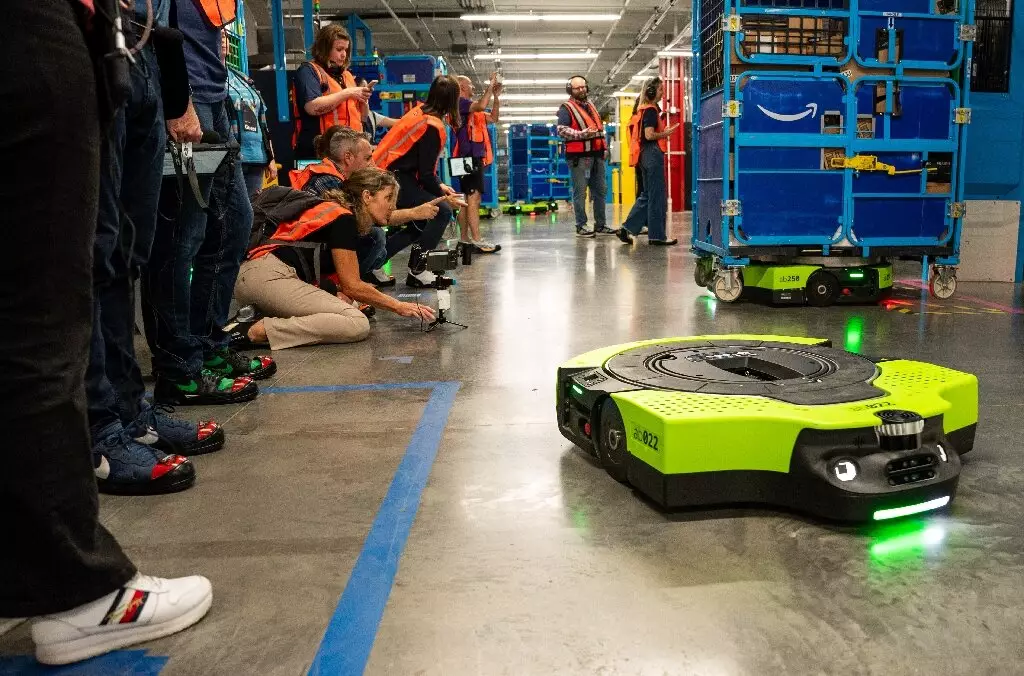In recent times, Amazon has taken substantial strides in solidifying its presence as a dominant force in the e-commerce landscape. The Seattle-based giant is not just focusing on online retailing but is actively integrating itself into various sectors, including logistics, health care, and entertainment. This article dissects some of the recent innovations that Amazon has unveiled and the implications of its broadening business strategy.
One of the primary focuses for Amazon is optimizing its logistics network to enhance delivery speed, a cornerstone of its customer satisfaction model. This commitment was recently highlighted by the announcement of a sophisticated computer system embedded within delivery vans. This system is designed to streamline the process by recognizing delivery stops in real-time and effectively managing package drop-offs. According to Doug Herrington, head of Amazon Stores, this innovation is more than a technical upgrade; it’s projected to significantly increase customer shopping frequency. Herrington emphasized that accelerating delivery times directly correlates with heightened customer engagement—a strategy aimed to ensure that in 2024, Prime members experience unprecedented delivery speeds across the globe.
Furthermore, Amazon’s operational efficiencies are evident in its financial performance. In the previous year, the company managed to reduce its shipping costs remarkably, saving 45 cents per unit shipped. These savings are monumental given the sheer volume of packages Amazon handles, leading to a profit exceeding $30 billion on a revenue of $575 billion. This financial achievement is largely fueled by its comprehensive business model that integrates online retailing with services like Amazon Web Services (AWS).
While Amazon’s business framework appears cohesive and effective, it has not been without its challenges. The multi-faceted approach, which positions Amazon Prime at the center of its strategy, is being scrutinized. Analysts, like Suzy Davidkhanian from eMarketer, have pointed out that the “flywheel model” keeps various services interconnected; however, this same model has drawn the attention of regulatory bodies. The U.S. government has initiated lawsuits alleging that Amazon’s practices may constitute illegal monopolization and inhibit fair competition.
In this context, the data-driven foundation of Amazon’s operations is critical. The company generates substantial revenue not only from product sales but also through targeted advertising using data collected from consumer behavior. For instance, the high-stakes decision to acquire streaming rights to NFL games for Prime Video serves dual purposes: it attracts sports fans and enhances Amazon’s ad revenue model by offering advertisers targeted access to these viewers.
Innovating in Health Care
Amazon’s ambitions are reaching into the health care sector, an area ripe for disruption. Its recent enhancements to the virtual health care service known as One Medical highlight its intention to provide 24/7 access to medical consultations at a low monthly subscription rate for Prime members. This model epitomizes convenience and accessibility, with the aim of pairing fast delivery with pharmaceutical services. The plan to implement rapid delivery of prescriptions via the Amazon Pharmacy is a game changer, promising delivery within 24 hours for a significant portion of its patients.
Analysts suggest that health care could become a pivotal area for Amazon, reinforcing its goal of becoming a comprehensive platform that serves diverse consumer needs. Amazon’s push into this sector reflects an understanding of evolving market demands, aligning with its larger strategy of being synonymous with convenience across multiple facets of life.
Advancing Retail Innovations
Aside from its ventures into health services, Amazon is also making advances in brick-and-mortar retail experiences. The introduction of “automated micro-warehouses” is designed to enhance in-store shopping experiences. Located alongside Whole Foods Markets, these facilities will leverage robotics for efficient order fulfillment, allowing consumers to collect online orders easily. This hybrid model exemplifies an integrated shopping experience, blending digital efficiency with traditional retail.
In addition, Amazon is integrating artificial intelligence within its e-commerce platform to refine product discovery. The implementation of AI allows product displays to be dynamically altered based on individual user preferences, thereby increasing the likelihood of purchases. These innovations are essential in maintaining a competitive edge and ensuring user engagement throughout the shopping journey.
While Amazon’s innovations present a forward-thinking narrative, it also faces criticism related to workplace safety and ethical concerns. Reports suggest that the accelerated delivery timelines could contribute to hazardous working conditions in their fulfillment centers. Critics argue that the focus on speed can create a high-pressure environment, potentially compromising worker safety.
As Amazon forges ahead in its quest for e-commerce supremacy, balancing rapid growth with ethical practices and employee welfare will be vital. The company’s trajectory indicates that it is committed to dominating multiple sectors; however, how it manages these challenges will ultimately shape its long-term legacy and public perception.
Amazon’s multifaceted approach to e-commerce, encompassing logistics, health care, and retail innovation, speaks to its ambition of becoming an indispensable part of everyday life. Nonetheless, its growing influence invites scrutiny from regulators and society alike, as it navigates the complex landscape of modern business.


Leave a Reply